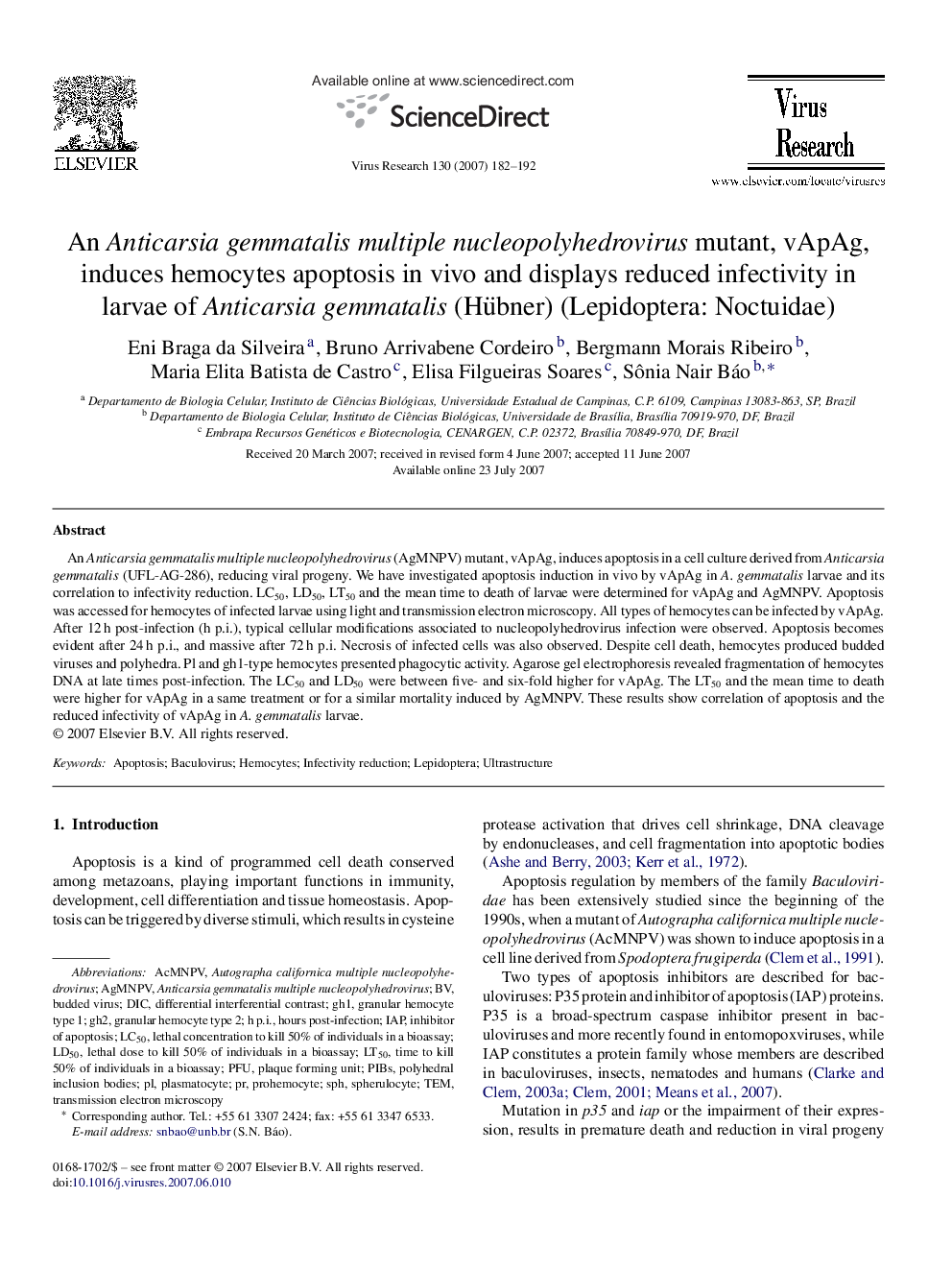| Article ID | Journal | Published Year | Pages | File Type |
|---|---|---|---|---|
| 3430664 | Virus Research | 2007 | 11 Pages |
An Anticarsia gemmatalis multiple nucleopolyhedrovirus (AgMNPV) mutant, vApAg, induces apoptosis in a cell culture derived from Anticarsia gemmatalis (UFL-AG-286), reducing viral progeny. We have investigated apoptosis induction in vivo by vApAg in A. gemmatalis larvae and its correlation to infectivity reduction. LC50, LD50, LT50 and the mean time to death of larvae were determined for vApAg and AgMNPV. Apoptosis was accessed for hemocytes of infected larvae using light and transmission electron microscopy. All types of hemocytes can be infected by vApAg. After 12 h post-infection (h p.i.), typical cellular modifications associated to nucleopolyhedrovirus infection were observed. Apoptosis becomes evident after 24 h p.i., and massive after 72 h p.i. Necrosis of infected cells was also observed. Despite cell death, hemocytes produced budded viruses and polyhedra. Pl and gh1-type hemocytes presented phagocytic activity. Agarose gel electrophoresis revealed fragmentation of hemocytes DNA at late times post-infection. The LC50 and LD50 were between five- and six-fold higher for vApAg. The LT50 and the mean time to death were higher for vApAg in a same treatment or for a similar mortality induced by AgMNPV. These results show correlation of apoptosis and the reduced infectivity of vApAg in A. gemmatalis larvae.
